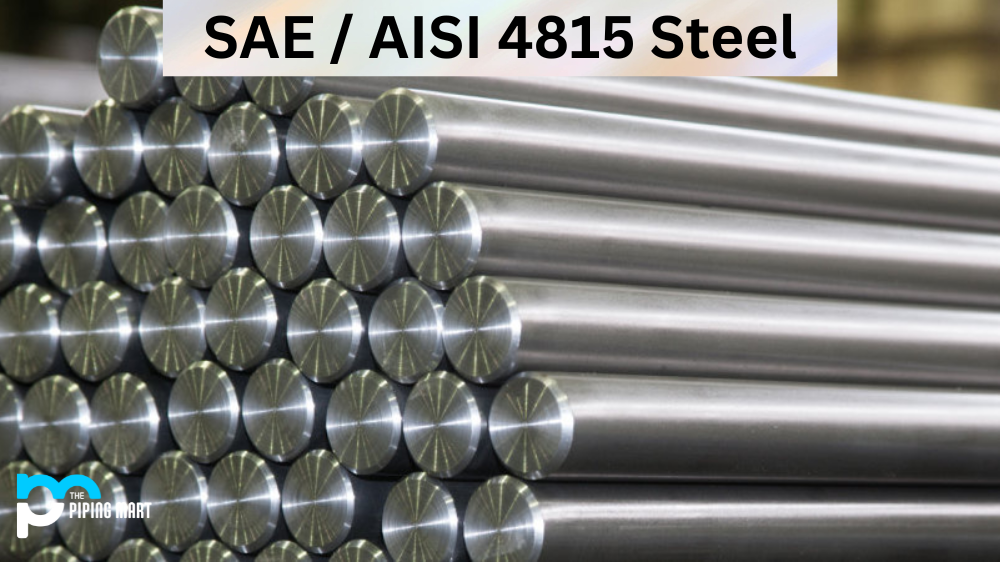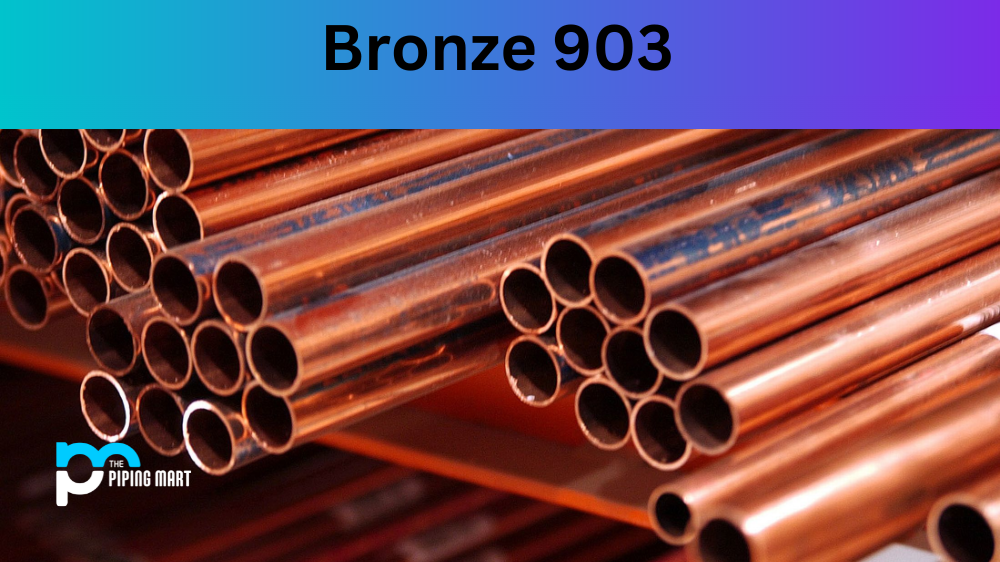AISI 4815 steel is a non-stainless, low-alloy steel that has been around for more than 100 years. UNS G82150 can be used for many different purposes, from making tools and machines to car parts and kitchenware. The SAE/AISI 4815 Alloy Steel, also known as UNS G82150 steel, is a low-carbon, nickel-chromium-molybdenum case-hardening steel. This alloy steel is known for its impressive wear resistance and excellent toughness. The composition of SAE-AISI 4815 steel includes nickel, which contributes to its strength and ductility; chromium, which enhances its corrosion resistance; and molybdenum, which improves its toughness and hardenability. With a wide range of automotive, aerospace, and construction applications, SAE/AISI 4815 Alloy Steel is a preferred choice for many engineers and manufacturers. Its impressive properties and versatile composition make it an exceptional material for various applications. In this guide, we’ll cover the various uses of 4815 Alloy Steel, its corrosion and heat resistance properties, as well as its machining and welding capabilities.
What Forms of AISI 4815 is Available at Piping Mart?
- Nut
- Bar
- Bolt
- Pipe
- Screw
- Tubing
- Valves
- Washers
- Flanges
- Fasteners
- Electrodes
- Stud Bolts
- Sheet Plates
- Pipe Fittings
- Forged Fitting
- Instrumentation Fittings
AISI 4815 Composition
| Element | Content (%) |
|---|---|
| Iron, Fe | Balance |
| Carbon, C | 0.13-0.18 |
| Manganese, Mn | 0.40-0.60 |
| Phosphorous, P | 0.035 (max) |
| Sulfur, S | 0.04 (max) |
| Silicon, Si | 0.15-0.30 |
| Nickel, Ni | 3.25-3.75 |
| Molybdenum, Mo | 0.20-0.30 |
AISI 4815 Physical Properties
| Properties | Metric | Imperial |
|---|---|---|
| Density | 7.7 – 8.03 g/cm3 | 0.278 – 0.290 lb/in³ |
| Melting point | 1427ºC | 2600ºF |
AISI 4815 Mechanical Properties
| Properties | Metric | English |
|---|---|---|
| Elastic modulus | 190-210 GPa | 27557-30458 ksi |
| Poisson’s ratio | 0.27-0.30 | 0.27-0.30 |
AISI 4815 Equivalent
- ASTM A29
- ASTM A322
- ASTM A331
- ASTM A519
- ASTM A752
- SAE J1397
- SAE J404
- SAE J412
- ASTM A505
- SAE J770
AISI 4815 Uses
SAE/AISI 4815 steel has a wide variety of applications due to its versatility, making it suitable for use in everything from automotive parts to kitchenware. It is an especially popular choice for industrial applications such as tools and machines since it is strong yet relatively lightweight. Other common uses include components of bridges, agricultural implements, railroad cars,, and other transportation equipment.
AISI 4815 Uses in Industries
Automotive Industry
One of the main uses of AISI 4815 is in the automotive industry. This type of steel is commonly used to manufacture gears, shafts, and other mechanical components for vehicles. Its high strength and wear resistance make it ideal for withstanding the demands of heavy-duty applications in the automotive sector.
Aerospace Industry
AISI 4815 is also widely used in the aerospace industry due to its excellent fatigue and impact resistance properties. It is commonly used to manufacture aircraft components such as landing gear, engine parts, and structural components. Its ability to withstand extreme temperatures makes it suitable for this industry.
Construction Industry
AISI 4815 is often used in the construction industry to make structural components such as beams, columns, and support structures. Its high strength and toughness make it a reliable material for building sturdy and durable structures that withstand heavy loads.
Oil and Gas Industry
Another major use of AISI 4815 is in the oil and gas industry. This type of steel is commonly used to manufacture drilling equipment, pipelines, and valves due to its high corrosion resistance and strength. It can withstand harsh environments and extreme temperatures, making it an ideal choice for this industry.
Manufacturing Industry
The manufacturing industry also relies on AISI 4815 for various applications such as tooling, die casting, and machining equipment. Its high hardness and wear resistance make it suitable for these industrial processes where durability and precision are crucial.
AISI 4815 Corrosion Resistance
This type of steel is highly resistant to corrosion due to the presence of chromium and nickel in its alloy composition. This means that it can withstand exposure to harsh chemicals and other corrosive elements without degrading over time. As a result, it can be used in environments with a higher degree of corrosion resistance.
AISI 4815 Heat Resistance
SAE/AISI 4815 steel also has excellent heat resistance properties, which make it ideal for high-temperature applications like furnaces or boilers. It can handle temperatures up to 800°F before losing its strength or becoming brittle due to overheating. Additionally, it has excellent thermal conductivity which allows it to dissipate heat quickly without retaining excess heat energy in the process.
AISI 4815 Heat Treatment
The heat treatment process is used to alter the physical properties of metals, such as hardness and ductility, while also improving their mechanical strength and wear resistance. Heat treating SAE/AISI 4815 steel involves heating it up to between 1300°F – 1400°F followed by quenching in oil or water at room temperature until cold before tempering at 350°F – 400°F for desired results. This process helps create a more uniform microstructure within the metal which makes it stronger overall while also making it more malleable so that it can be bent or formed into desired shapes without cracking or breaking apart easily.
AISI 4815 Machining
Machining refers to the shaping and cutting of metals using various tools such as drills or lathes. When machining SAE/AISI 4815 steel, one should take precautions such as using dry cutting fluids rather than coolants when drilling holes in order to minimize wear on cutting edges caused by friction between the drill bit and workpiece material due to heat generated during drilling operations. Additionally, higher speeds should be avoided when drilling through thicker sections since increased friction will cause an increase in heat buildup which could lead to tool breakage if not monitored properly with appropriate cooling methods being implemented accordingly throughout machining operations.
AISI 4815 Welding
Welding refers to joining two separate pieces together, usually through melting one piece into another using specialized tools like torches or welders while adding filler material along the joint line in order to prevent gaps from forming between joined parts once cooled down after welding operations are completed successfully. Welding with SAE/AISI4815steel requires careful preparation prior to welding operations taking place, including preheating workpieces up to 300 – 500 degrees Fahrenheit followed by a slow cool down afterward, allowing welded joint enough time harden properly before loading any heavy loads onto them. Additionally, proper shielding gases should be used during welding operations based on particular project requirements ensuring strong, clean welds every time.
Conclusion:
In conclusion, there are numerous benefits associated with utilizing SAESAE / AISI 4815 steel for a wide range of different applications. Not only does this type of steel offers excellent corrosion, heat, and ma chin ing re si stance, but it also has good welding capabilities when prepared properly. Before deciding on this type of steel for any project needs, it’s always important to consult with metal specialists to ensure that the proper material choices are made for each individual situation. Doing so will guarantee that your metal needs are met with quality results every time.

Pipingmart is a B2B portal that specializes in metal, industrial and piping items. Additionally, we share the latest information and information about materials, products and various types of grades to assist businesses that are involved in this business.



